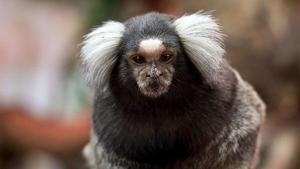Are wild monkeys becoming a reservoir for Zika virus in the Americas?

A Brazilian study found Zika virus in many wild marmoset monkeys, which could become part of a threatening transmission cycle for humans.
When the Zika virus exploded in the Americas in 2015, it quickly became an international scare: Pregnant women, bitten by infected mosquitoes, could pass the virus to their babies, some of whom suffered brain malformations as a result. But the epidemic eventually wound down, thanks in part to large swaths of populations developing immunity. Now, scientists in Brazil have discovered that more than a third of the wild monkeys they tested for Zika have been infected, the strongest evidence yet that a “reservoir” for the disease outside of humans has the potential to form.
“We found this phenomenon in two different cities at the same time, so [infected monkeys] are more common than we think,” says Maurício Lacerda Nogueria, a virologist at the São José do Rio Preto School of Medicine in Brazil, who led the new study.
Even though his team is still a long way from showing that the monkeys spread the virus between themselves—which is required for a reservoir to form—and then reinfected humans through a mosquito intermediary, he says the new study shows the potential is there. If a reservoir of Zika virus in wild monkeys does develop in the Americas, it could set up a “sylvatic cycle” in which the pathogen repeatedly retreats into remote forests and then jumps back into cities, starting new human outbreaks. Just such a sylvatic cycle occurs between monkeys, mosquitoes, humans, and the Zika virus in Africa, as well as with its cousin yellow fever in Africa and the Americas.
Two years ago, a different research group identified Zika in three capuchin and four marmoset monkeys in Brazil using a polymerase chain reaction (PCR) test, which detects viral genetic pieces. But these monkeys, several of which were pets, lived in close proximity to humans. The new study examined wild monkeys that live near two cities: São Paulo and Belo Horizonte.
The researchers and their colleagues analyzed the carcasses of 82 marmosets and capuchins that had been killed either by people or wild animals. In 32 of the monkeys, at least one tissue tested positive for Zika on PCR, they report this week in Scientific Reports. “The new findings are quite significant,” says co-author Nikos Vasilakis, an arbovirologist at the University of Texas Medical Branch (UTMB) in Galveston. When the researchers sequenced the Zika virus from four marmosets so they could compare it to the Americas strain circulating in humans, they found a close match. And they showed a geographic link between Zika-infected mosquitoes and the monkeys.
Scott Weaver, an arbovirus specialist at UTMB who was not involved with the study, says the new findings add support to the “vertebrate half of the equation” needed to prove that a sylvatic cycle exists. He notes that an experiment he co-authored with Vasilakis lends further support. They found that—in three infected different New World monkeys—the Zika virus could copy itself to high levels in the animals’ blood; theoretically, these animals thus could easily transmit the virus to mosquitoes that bit them.
But researchers have yet to prove the mosquito half of the equation. Aedes aegypti, the main species responsible for the Brazilian outbreak, preferentially feeds on humans and would only bite monkeys if its favorite food was in short supply. A sylvatic cycle would require a mosquito species that typically feeds on monkeys and supports growth of the Zika virus. The virus then could survive by moving between monkeys and mosquitoes, without a human intermediary, for years. No such mosquito has been found. What’s more, if Zika did move only between monkeys and then jumped back into humans, the virus would have a different genetic signature than those found in previously infected humans; genetic analyses have found no such changes over time.
The lack of a sylvatic cycle would be good news for disease eradication. No vaccine for Zika yet exists, but an effective one, if widely used, could chase the virus out of the continent until an infected human imports it again. On the other hand, a sylvatic cycle would make it impossible to eradicate Zika, even with mosquito control and an effective vaccine, Vasilakis says. “The virus will be probing the human population all the time until it finds enough susceptible people to cause an outbreak,” he says.
Vasilakis’s hunch is that the monkeys he and his colleagues studied likely were not part of a sylvatic cycle but were bitten by mosquitoes that regularly dined on the many infected humans who lived near their habitat. “I suspect they’re victims of opportunity,” he says. “But this is how things start.”
